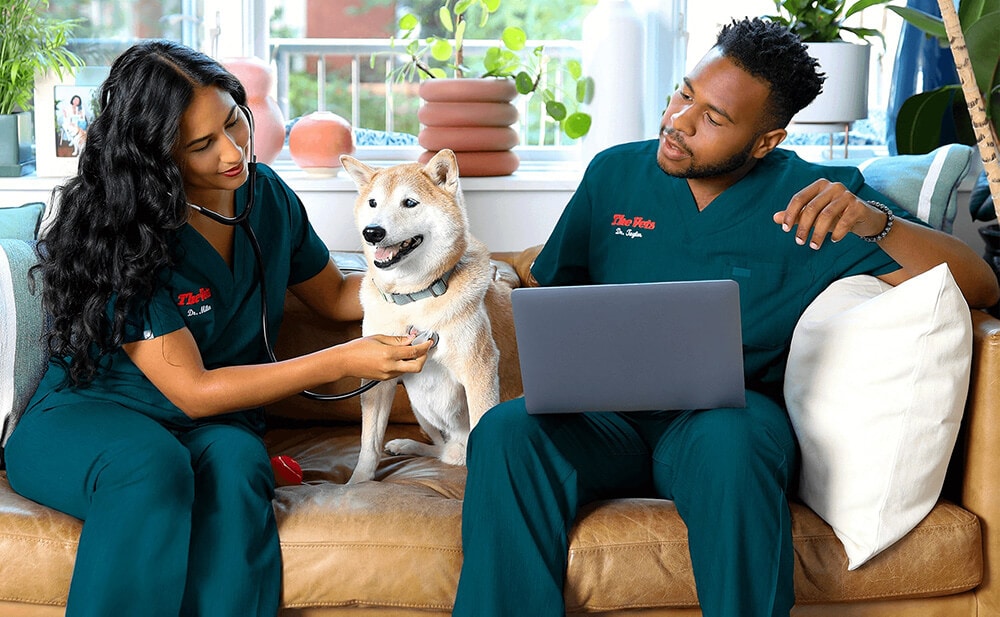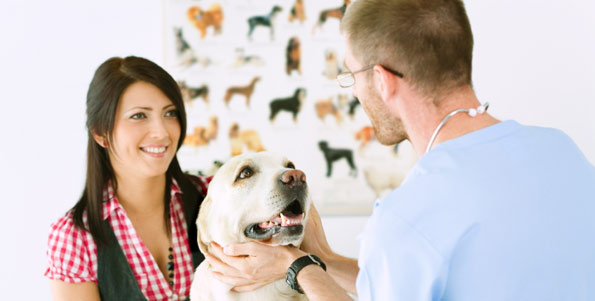Most Common Emergency Surgeries Performed at animal emergency care bellingham Centers
Most Common Emergency Surgeries Performed at animal emergency care bellingham Centers
Blog Article
Everything About Veterinarian Surgery: Understanding the Relevance of Professional Take Care Of Your Animals
Veterinary surgery is a critical component of pet health care. It encompasses various treatments, from regular optional surgical treatments to urgent interventions. Understanding the ins and outs of these surgical treatments can assist pet dog owners make educated choices. The prep work, execution, and recuperation stages are essential for making certain the health of animals. With appropriate understanding, owners can browse the intricacies of vet treatment. What aspects should be considered before a pet dog undergoes surgical treatment?
Types of Veterinarian Surgeries
When an animal calls for surgical intervention, understanding the various sorts of vet surgical procedures can help pet owners make educated choices. Vet surgeries can be extensively classified into 3 major kinds: elective, immediate, and emergency situation surgical procedures. Elective surgical treatments, such as spaying or neutering, are intended treatments that are not instantly serious. Urgent surgical treatments, like those for international body removal, should be executed soon however are not life-threatening in the moment. Emergency situation surgical procedures, such as those attending to severe injury or inner blood loss, are important and require instant attention.Additionally, surgical procedures can vary in complexity, ranging from minimally invasive laparoscopic procedures to extra substantial open surgeries. Each sort of surgery lugs its very own threats and healing procedures. Understanding these classifications allows pet dog proprietors to take part in purposeful conversations with veterinarians, resulting in much better outcomes for their precious family pets.
Planning for Your Pet dog's Surgical treatment
Planning for a family pet's surgical procedure entails a complete checklist to guarantee all essentials are covered. Effective interaction with the vet is crucial for comprehending the procedure and any type of necessary pre-operative actions - animal emergency care bellingham. Additionally, having clear post-operative treatment instructions will certainly aid owners give the very best assistance for their recovering pet dogs
Pre-Surgery Checklist Fundamentals
Assuring a smooth surgical experience for a pet needs careful preparation and interest to detail. A pre-surgery checklist is essential for family pet owners to comply with. Validating the set up surgical treatment date and time is vital. Proprietors ought to also validate that their family pet has actually fasted according to the vet's instructions, typically for 8-12 hours before surgical procedure. Gathering necessary medical documents, consisting of inoculation history, is very important for the vet's testimonial. It is additionally a good idea to prepare a comfortable room in your home for the pet dog's recovery after surgical treatment. Lastly, owners should have a prepare for transportation to and from the veterinary facility, making certain that the pet dog is safe and secure and comfortable throughout the journey. Complying with these actions can greatly improve the medical experience.
Communicating With Your Vet

Efficient communication with the vet is essential for a successful surgical experience for pets. Proprietors ought to be prepared to discuss their pet dog's clinical history, including any kind of pre-existing problems, medications, and allergies. This details helps the veterinarian examine dangers and tailor the surgical plan appropriately. Additionally, pet proprietors should ask inquiries regarding the procedure, anesthesia, and anticipated outcomes to assure they fully recognize the process. Making clear any uncertainties can alleviate stress and anxiety for both the pet and the owner. It is additionally vital to communicate any kind of behavior changes or issues observed in the pet leading up to the surgery. Inevitably, clear discussion cultivates depend on and cooperation, making certain that animals obtain the most effective possible care throughout their medical trip.
Post-Operative Treatment Directions
After talking about the procedure with the vet, pet dog owners ought to concentrate on post-operative treatment directions to promote a smooth healing for their family pets. These directions normally include monitoring the surgical site for indications of infection, such as redness or discharge. Pets might require to be kept one's cool and restricted to stop extreme movement that might interfere with healing. Discomfort management is vital, so proprietors need to adhere to the veterinarian's assistance on administering medicines. Furthermore, dietary constraints might be suggested to stay clear of intestinal trouble. Regular follow-up visits are necessary to ensure proper healing and resolve any issues. By adhering to these post-operative care instructions, pet dog proprietors can significantly contribute to their pet dog's recuperation and total wellness.
The Surgical Refine Explained
The medical procedure for family pets encompasses critical steps that assure their security and healing. Pre-surgery prep work are necessary for lessening threats, while post-operative treatment standards play a vital role in promoting recovery. Understanding these components helps animal proprietors browse the medical experience better.
Pre-Surgery Preparations
Prior to a family pet undertakes surgical treatment, a number of crucial prep work need to occur to guarantee a risk-free and effective procedure. First, a detailed vet examination is important to assess the pet's total health and identify any type of potential threats. This may include blood tests, imaging, or other diagnostics. The veterinarian will also go over anesthetic choices customized to the pet's certain demands. In addition, family pet owners are commonly instructed to hold back food and water for a defined time prior to surgical procedure to lessen the threat of complications during anesthetic. It is very important for proprietors to give a complete case history, consisting of any kind of drugs or allergies, ensuring the medical team has all required details. Appropriate interaction and adherence to pre-surgery guidelines can substantially improve the end result of the treatment.
Post-Operative Treatment Standards
Appropriate post-operative care is vital for ensuring a pet's recuperation complying with surgical treatment. After the procedure, pet dogs ought to be kept an eye on closely for any kind of signs of difficulties, such as excessive bleeding, swelling, or unusual behavior. It is necessary to follow the veterinarian's directions relating to drugs, including discomfort relievers and anti-biotics. Animals need to be kept in a silent, comfy atmosphere to lower anxiety and advertise healing. Restricting task is crucial; short, leashed walks might be necessary, however leaping or running should be avoided. Regular follow-up appointments should be arranged to analyze the recovery procedure. In addition, the surgical website must be kept clean and dry, with any indications of infection reported to a veterinarian promptly. Abiding by these standards improves recuperation results.
Anesthetic and Pain Monitoring
Reliable anesthetic and discomfort management are important components of veterinary surgical procedure, ensuring that pets remain comfortable and risk-free throughout the treatment. Veterinarians analyze each family pet's specific requirements, taking into account elements such as age, weight, health status, and the kind of surgical procedure being performed.Anesthesia procedures generally include a mix of pre-anesthetic drugs, induction agents, and inhalant anesthetics, permitting accurate control over the animal's level of consciousness. Monitoring during surgery is important; veterinarians constantly observe crucial indications to deal with any prospective problems promptly.Pain monitoring strategies might involve opioids, non-steroidal anti-inflammatory drugs (NSAIDs), and anesthetics, customized to the pet dog's certain situation. This complex strategy assists reduce browse around this site pain and advertises a smoother surgical experience. By prioritizing effective anesthetic and pain management, veterinary specialists enhance the overall well-being of animals undertaking procedures, ensuring they obtain the greatest requirement of care.
Post-Operative Treatment and Recuperation
Adhering to surgical procedure, the focus changes to post-operative care and recovery, which is vital for making sure an animal's risk-free go back to regular activities. Throughout this period, family pets require a silent, comfortable atmosphere to aid healing. Proprietors ought to carefully check their pets for any type of signs of pain or unusual behavior.Veterinary standards commonly include particular click over here now guidelines associated with medication management, injury care, and nutritional changes. It is important to stick to these referrals to decrease complications and advertise healing. Pets may require to be restricted from vigorous tasks, such as running or jumping, during their recovery period (animal emergency care bellingham).Regular follow-up appointments with the vet permit for tracking of the pet dog's progression and timely modifications to the care plan. Providing emotional support and companionship can additionally boost an animal's healing experience, helping to minimize tension and anxiousness. Generally, thorough post-operative care plays a significant duty in achieving an effective recovery
Identifying Problems After Surgery
Just how can animal owners identify problems after surgical treatment? Recognition of certain indicators is important for guaranteeing the wellness of pets throughout recovery. Common indicators consist of extreme swelling, soreness, or discharge at the medical site, which might indicate infection. In addition, consistent pain, shown by whining or reluctance to relocate, need to motivate instant interest. Modifications in appetite or water consumption can likewise suggest difficulties; a reduction in these habits might indicate pain or distress.Moreover, animal owners must check their animals for any kind of unusual behavior, such as lethargy or trouble breathing, as these can be indications of significant problems. Vomiting or diarrhea adhering to surgical treatment might need immediate vet examination. Identifying these difficulties early can significantly affect a family pet's recuperation process, emphasizing the relevance of vigilance and punctual interaction with a veterinarian for any kind of concerning signs.
The Role of Vet Specialists in Surgical Treatment
Vet specialists play an essential role in ensuring the safety and success of surgical treatments for pet dogs, particularly following surgery when keeping track of and treatment are paramount. These experts consist of veterinarians, vet service technicians, and support staff, every one of whom add specialized skills to the surgical process.Before surgery, vets conduct detailed evaluations to analyze the pet dog's health, making sure that any kind of underlying problems are managed. Throughout the procedure, the surgical team offers anesthetic, preserves sterile settings, and checks key signs, very important for lessening risks.Post-operative care is equally significant; vet professionals next observe for issues, take care of discomfort, and overview proprietors on recuperation methods. Their proficiency enables them to acknowledge very early indications of distress or infection, making sure prompt intervention. Inevitably, the collective initiatives of veterinary professionals in surgical care foster a safe atmosphere, promoting the health of pets throughout the medical trip.

Regularly Asked Inquiries
Exactly how Do I Pick the Right Vet Doctor for My Animal?
Choosing the ideal veterinary specialist includes looking into certifications, reviewing evaluations, and reviewing the center's environment. It is necessary to show on the cosmetic surgeon's experience with specific treatments and their interaction style when making a decision.
What Prevail Misconceptions About Veterinarian Surgeries?
Typical misconceptions about vet surgical procedures consist of beliefs that they are constantly dangerous, unneeded, or for emergency situations. Many pet dog proprietors underestimate the advantages of precautionary treatments and the ability associated with vet medical care.
Just How Much Will My Family pet's Surgical procedure Cost?
The expense of an animal's surgical procedure can vary significantly based on variables such as the sort of procedure, the veterinarian's experience, and geographic area (canine tplo surgery). Commonly, expenditures range from a couple of hundred to a number of thousand bucks

Can My Family Pet Eat Prior To Surgical Procedure?
Prior to surgical treatment, it is usually encouraged that animals avoid eating for a specific duration. This fasting helps in reducing the danger of complications during anesthetic. Owners must consult their vet for specific directions customized to their family pet's needs.
Suppose My Animal Has Pre-Existing Health Issues?
When an animal has pre-existing health problems, it's vital for the vet to assess these factors before surgical treatment. This assessment guarantees appropriate safety measures are taken, lessening threats and optimizing the family pet's general security throughout the procedure.
Report this page